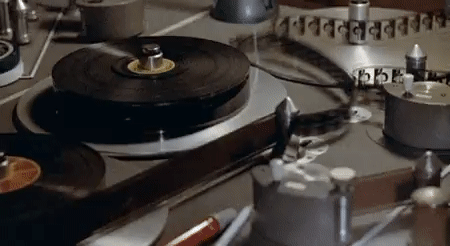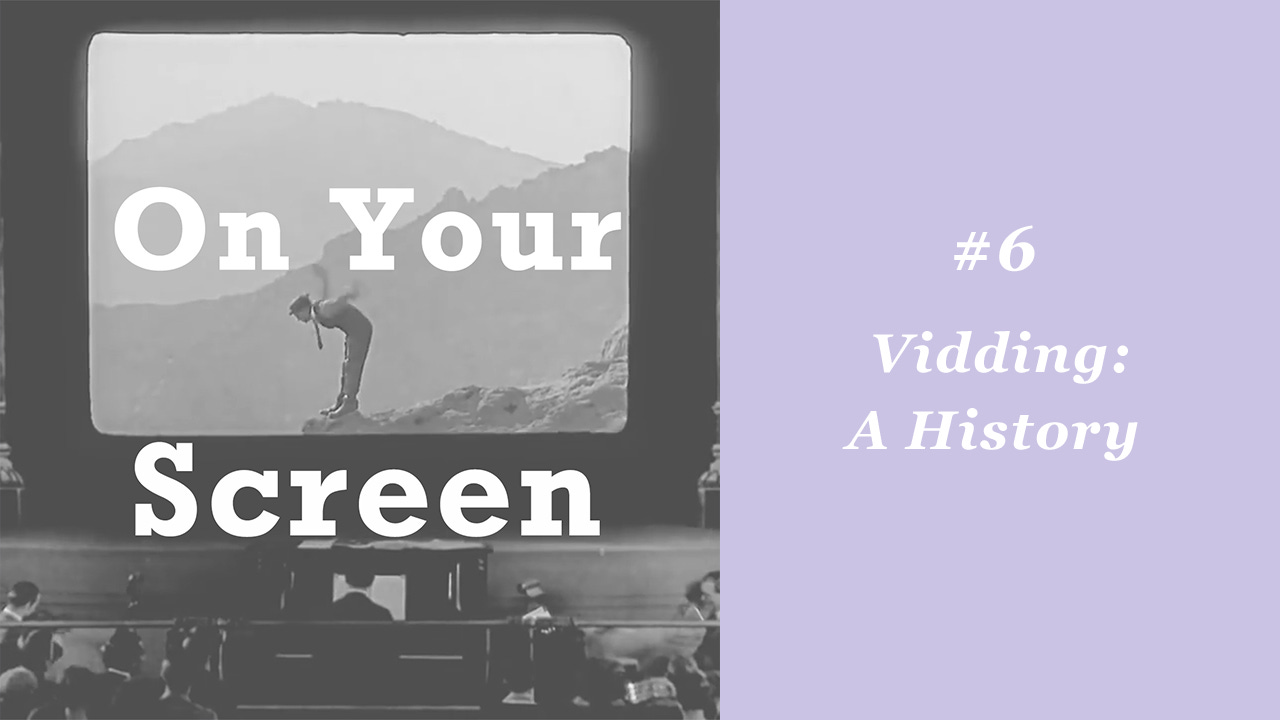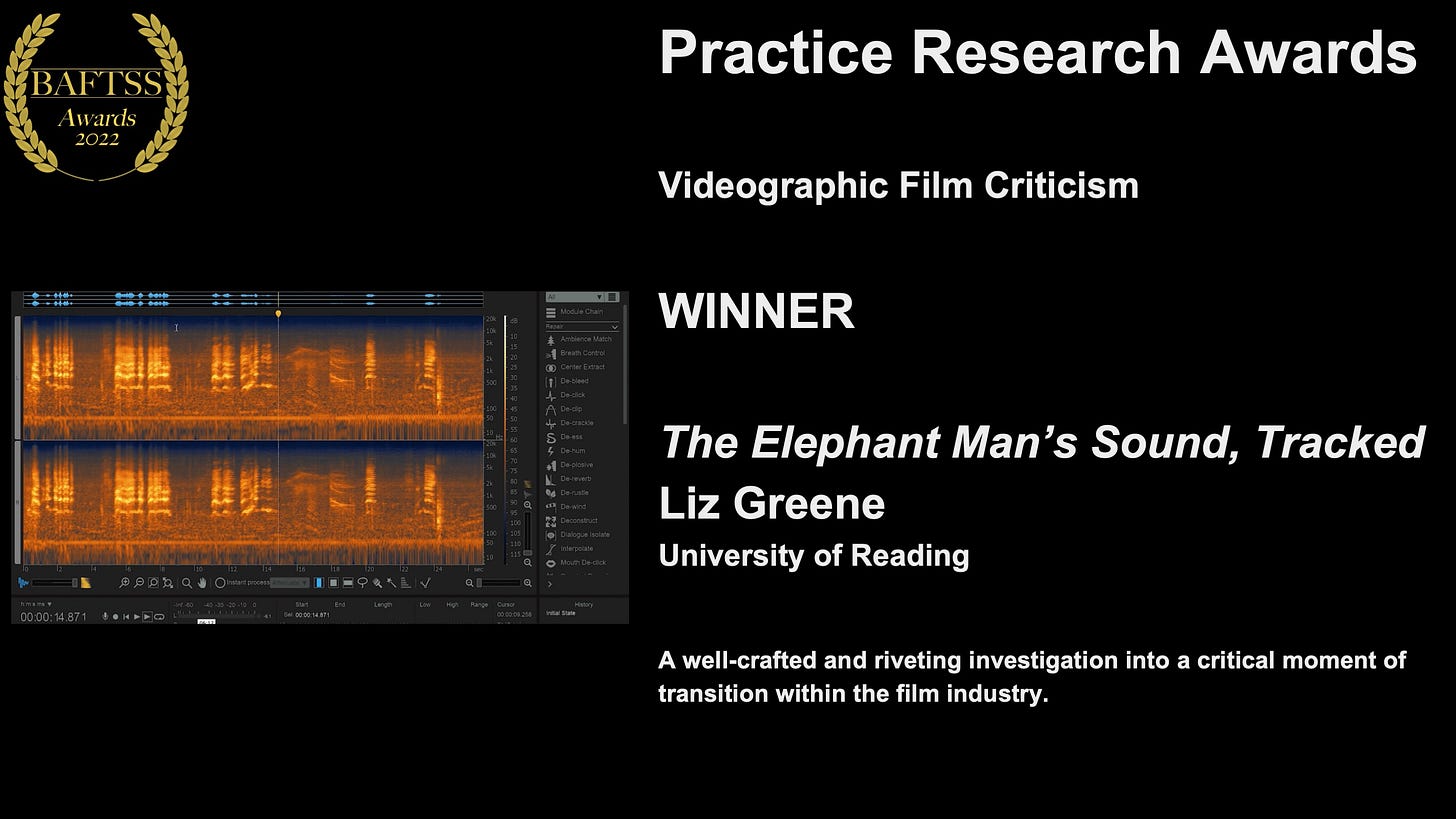Volume 2, Issue 16: MEMORIA & Remix Culture
Plus, a new episode of On Your Screen dedicated to the history of vidding
Last month, I saw Apichatpong Weerasethakul’s Memoria for the second time. The first time I saw the film, a delay on the subway caused me to walk/run into the theater about seven minutes late. And while I enjoyed the film, my viewing experience never fully recovered.
And so, when I saw the film a couple weeks ago, I got there with enough time to sit in my seat for a few minutes, so I could just breathe and mentally prepare for the theatrical experience. As many of you will know, the film, which stars Tilda Swinton, is only showing in theaters. Its road tour began April 1.
The decision to release the film only in theaters more or less comes down to the work’s stunning sound design. The plot itself revolves around a painful thud-like sound Swinton’s character, Jessica, keeps hearing in her head. It’s a truly awful sound, one that, as Richard Brody notes below, could damage one’s ear in the wrong context.

Brody is also one of a handful of critics who I have seen offer the view that Memoria should be given an at-home release. At first, I disagreed. Unless one has a high-quality sound system in their home, I cannot imagine how the film would translate as well as it does in a theater setting. Much of the film hinges on our ability to empathize with Jessica — to understand how horrible the sound is and what it would be like to have it randomly take over one's head.
On the latest episode of On Your Screen, Francesca Coppa mentions that seeing Chaplin films on the big screen for the first time made her realize that she had, in fact, never actually seen them before. Just as it does with Memoria, the theater experience matters.
So as I was thinking through all of this a few nights ago, I thought perhaps I could make a short video essay on the topic for my Film Thoughts series. But then I realized … there’s no digital copy of the film out there! I can’t get a DVD, I can’t go to a streaming service and record my screen. Duh!
Of course, there probably exists somewhere out there on the internet a digital copy of the film. Let alone any potential legal implications, finding and then using the film would not feel right, at least for me.
Coming to this realization made me agree with Brody about Memoria’s exhibition strategy. And not just for selfish reasons. Apichatpong Weerasethakul is certainly entitled to do whatever he pleases with his film, and there are many benefits to making the case for the theatrical experience.
But at what point does restricting the film to the theatrical space go too far? At what point does trying to preserve the “true” cinematic experience actually result in a lack of engagement with contemporary cinephilia, fandom, and moving image culture?
It seems to me that we are reaching the point where limiting a film’s ability to engage with remix culture would be more or less like telling the editors and critics of magazines and websites they cannot write about a film. I understand the obvious difference — in videographic criticism, we are literally working with the moving images and sounds. And of course, issues of access have always existed and remain present when it comes to watching and engaging with films.
But think for a moment, though, about what it would mean if critics and writers of decades past were able to see films, think up critical arguments that would aid and enrich the experience of watching, and then were prevented from accessing the tools they needed to write, or were restricted from doing so.
Think of all the great video essayists (and I don’t mean me!) who could help us feel our way through a beautifully complex film like Memoria. Maybe some still will, but, again, I think unless the video essayist is given access to the film by the director or someone involved with the film’s production and/or distribution, wearing the illegal download on one’s sleeve might be too big a risk, both in terms of copyright and general vibes. At least with Memoria, Apichatpong Weerasethakul is restricting his film for a noble purpose.
In the past year or so, YouTube video essayists like Thomas Flight and Broey Deschanel have tweeted often about YouTube’s copyright restrictions and their preservation of corporate interests.


It’s a major problem, one that makes clear the resistance this work still faces and the advocacy that still needs to be done.
And so, the timing couldn’t be more perfect to welcome Francesca as a guest to On Your Screen. A professor of English & Film Studies at Muhlenberg College, she also helped found the Organization for Transformative Works and has extensive experience lobbying for copyright reform. Her work helped secure Digital Millennium Copyright Act exemptions for noncommercial remix artists from the Library of Congress.
Copyright and fair use come up during the course of our conversation, but much of the episode is devoted to Francesca’s new book Vidding: A History from University of Michigan Press. We discuss the history of the form, the community of primarily women creators who pioneered vidding, online fan communities, the impact of technologies like the VCR, personal editing software and YouTube had on the form, and much more. You can read and learn more about the FREE, open-access book here.
Support the Show on Patreon
Please consider supporting the podcast, this newsletter, and all of the other stuff I do on Patreon! Over on that page, I blog once a month. Just this past week I shared a draft of a video I’m working on, “Screenshot: A Video Essay.” One of my current projects is blogging my way through kogonada’s complete body of work. I also recently reviewed Found Footage & Collage Films, the stunning new DVD/Blu-ray set from Found Footage Magazine. Plus, it’s an easy way to support the podcast, this newsletter, and all of the other things we do.
What Have You Been Watching?
From time to time on Twitter, I like to put out a question to followers of The Video Essay Podcast: What’s a video essay(s) you’ve made recently and/or watched that you particularly enjoyed?
Last month, the question yielded dozens of responses. You can find them all by clicking the tweet below.


A Video Essay, Perhaps?
While watching the Oscars, I put out a poll on Twitter: was the James Bond tribute video that aired a video essay? As all great journalists must do, I will keep my opinion to myself. However, 63% of respondents said, yes, the tribute is a video essay. What do you think?
News & Notes
Please send news and notes for future newsletters to willdigravio@gmail.com
May
The Essay Library is currently accepting micro-essay submissions for their next collaborative essay. The prompt for Vol. 4 is to make a video essay based on any title generated by the Video Essay Title Bot. The deadline to submit is May 2, 2022 by 11:59 pm PDT. Learn more here.
REFRAME, the open-access, multimedia digital publishing platform at the University of Sussex, is celebrating their 10th anniversary next month! Join them for the May 19 event, “Pasts, Presents & Futures in alternative OA publishing: 10 years of REFRAME,” featuring a keynote presentation by Catherine Grant. More here.
Looking Ahead
“Theory & Practice of The Video Essay,” an International Conference on Videographic Criticism, will be held at the University of Massachusetts Amherst from September 22-23, 2022. Learn more here.
More News & Notes
[in]Transition published a new issue at the beginning of this month! Read and watch here.
Sessions from the fantastic online event, “Interrogating the Modes of Videographic Criticism,” are now available to watch online. Access here.
Congratulations to Liz Greene, winner of the BAFTSS Practice Research Award for Videographic Film Criticism! Liz won for her brilliant video essay, “The Elephant Man’s Sound, Tracked.” Liz was one of the earliest guests of The Video Essay Podcast. You can listen to our conversation from February 2020 here. Additionally, John Gibbs and I discussed Liz’s essay on a March 2021 episode of the podcast. Listen here. And another congratulations to Max Tohline, whose work, A Supercut of Supercuts was shortlisted!
Jason Mittell shared the exiting news of a new series, Videographic Books: Film & Media Scholarship in Sound & Image, he has started with the team at Lever Press. Learn more here.
Cormac Donnelly has started a new blog, Deformative Sound Lab, where he is chronicling and sharing videographic experiments he is creating as part of his PhD research, which focuses on film sound and videographic practice.
A belated congratulations to friend of the show Scout Tafoya, who published the 100th entry of “The Unloved,” his ongoing video essay series at RogerEbert.com.
I wrote a short essay for Film School Rejects on the ways in which kogonada’s latest film, After Yang, recalls his video essay practice. Read here.
Last month, Vox.com published an article on the “video essay boom.” Read here.
David Verdeure (aka Filmscalpel) is curating a new video essay initiative for Film Fest Ghent. Read more and watch some of the first videos here.
Kevin B. Lee held a masterclass on “Cinema in the Age of Netflix.” Read and watch here. Kevin also delivered a talk at the University of Colorado Boulder on his desktop documentary, Transformers: The Premake.
And some exciting news to look forward to:








